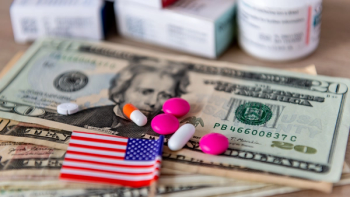
Getting it Done in Washington
During his fifth State of the Union address, President Obama struck many familiar chords – including a line about ending certain subsidies to pharmaceutical companies – and emphasized, repeatedly, the need to get things done on the policy front.
During his fifth State of the Union address, President Obama struck many familiar chords – including a line about ending certain subsidies to pharmaceutical companies – and emphasized, repeatedly, the need to get things done on the policy front. Will the sequestration drum beat goad members of the 113th Congress onto the dance floor?
President Obama seems undecided about whether protecting drug company profits is the same thing as funding research and innovation.
During his fifth State o the Union address, President Obama said he'd reduce taxpayer subsidies to prescription drug companies
He is not alone. As data firms,
In its clockwork
What punitive policies? Obama mentioned the biopharmaceutical industry only once by name during the address, when he said his administration would “reduce taxpayer subsidies to prescription drug companies.” Is that code for allowing Medicare to negotiate drug prices under Part D? Does it mean an end to the DTC advertising tax credit? Or was the phrase merely spoken with tongue and lip, without incisor? If the last two years are any guide, it’s probably the latter. Billy Tauzin has been dragged through the mud in recent months for his $80 billion, 2009 deal with the White House during the healthcare reform debate. But so far, even now that parts of the deal
“Every dollar we invested to map the human genome returned $140 to our economy,” President Obama said in the address. “Today, our scientists are mapping the human brain to unlock the answers to Alzheimer’s; developing drugs to regenerate damaged organs…now is not the time to gut these job-creating investments in science and innovation.”
But the Super Committee failed, Congress continues to drift “from one manufactured crisis to the next,” President Obama said, and the resulting
How bad will the alternative be, assuming the most severe elements of the spending cuts are averted by identifying more sensible, or at least more palatable trimmings in the quest for deficit reduction? In a push for infrastructure upgrades, President Obama singled out the CEO of Siemens America, Eric Spiegel, who was in the Capitol Building for the speech, calling Siemens “a company that brought hundreds of new jobs to North Carolina,” adding that Spiegel “said that if we upgrade our infrastructure, they’ll bring even more jobs.” Maybe some of those upgrades can be paid for with revenues generated from the new medical device excise tax.
Regardless of what President Obama thinks of the pharmaceutical industry, he knows the NIH alone can’t bring new, innovative products and devices to market. Policymakers will have to take a hard look at what funding for which scientists, and the organizations they work for, are most worth protecting for the public good, and what that protection looks like once the hatchet falls.
Newsletter
Lead with insight with the Pharmaceutical Executive newsletter, featuring strategic analysis, leadership trends, and market intelligence for biopharma decision-makers.





